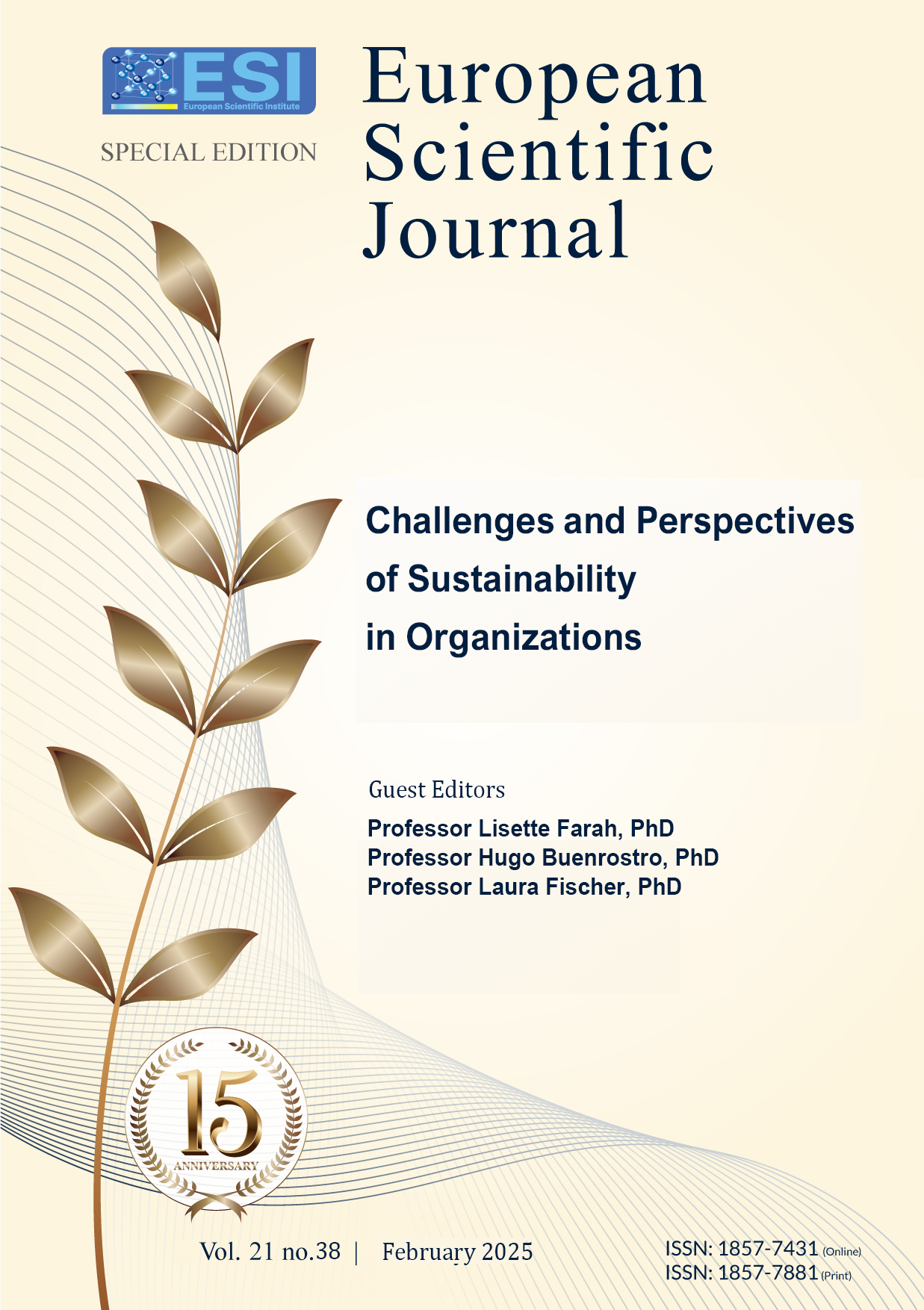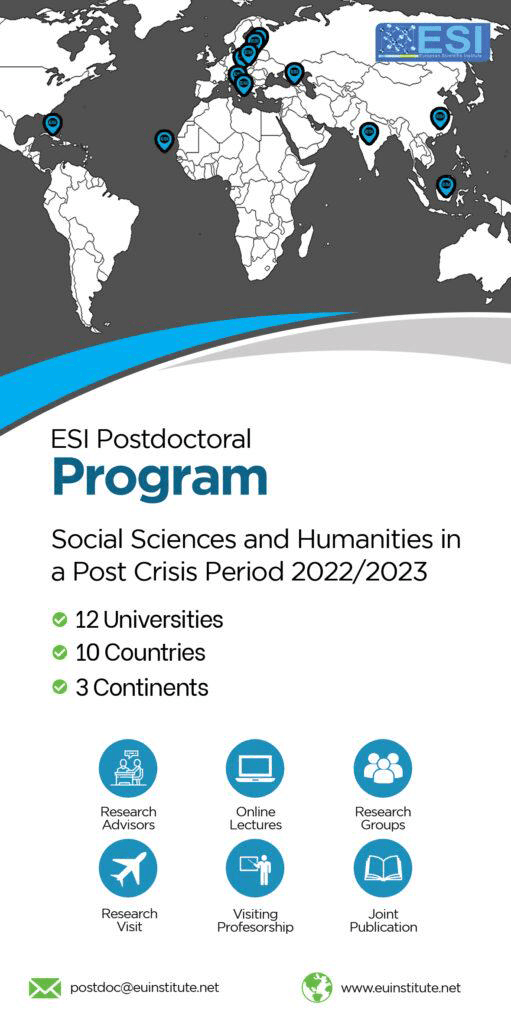Emergencia en la cocina: capacidades dinámicas desplegadas en los restaurantes en época de crisis
Abstract
La permanencia de las organizaciones, entre ellas las empresas, requiere del mantenimiento y formación de un conjunto de capacidades que conjuguen la eficiencia y la innovación. Lo anterior se acentúa cuando en el entorno se presentan acontecimientos que cambian de modo radical las condiciones en las que se desempeñan las organizaciones. Este es el caso de las crisis económicas, por desastre y de otra índole, a las que se enfrentan las organizaciones, en particular, y la sociedad en general. Al respecto, el artículo tiene la finalidad de identificar las estrategias instrumentadas por los restaurantes en diferentes contextos de crisis, así como el tipo de capacidades involucradas, tomando como base la distinción entre capacidades dinámicas y capacidades ordinarias. Para ello, se recurre a la revisión de literatura como propuesta metodológica y se selecciona una muestra de 271 artículos y actas/ponencias en congresos. Se observa que la teoría de capacidades dinámicas es pertinente para el estudio del desenvolvimiento de la industria restaurantera en diferentes episodios de crisis. Asimismo, que las capacidades dinámicas involucradas han transitado de aquellas orientadas al desempeño del negocio, como el mantenimiento de los ingresos, hacia otras en que las prácticas de responsabilidad social o de sustentabilidad tienen una mayor presencia.
The permanence of organizations, including companies, requires the maintenance and development of a set of capabilities that combine efficiency and innovation. This is accentuated when events occur in the environment that radically change the conditions in which organizations operate. This is the case of economic crises, disasters, and others, that organizations and society in general face. In this regard, the article aims to identify the strategies implemented by restaurants in different crisis contexts, as well as the type of capabilities involved, based on the distinction between dynamic capabilities and ordinary capabilities. To do so, a literature review is used as a methodological proposal, and a sample of 271 articles and conference proceedings/presentations is selected. It is observed that the theory of dynamic capabilities is relevant to the study of the development of the restaurant industry in different crisis episodes. Likewise, the dynamic capabilities involved have shifted from those oriented towards business performance, such as maintaining income, to others in which social responsibility or sustainability practices have a greater presence.
Downloads
Metrics
PlumX Statistics
References
2. Batat, W. (2021). How Michelin-starred chefs are being transformed into social bricoleurs? An online qualitative study of luxury foodservice during the pandemic crisis. Journal of Service Management, 32(1), 87-99. https://doi.org/10.1108/JOSM-05-2020-0142
3. Biswas, A. (2023). Elucidating the role of digital technologies in bridling the ramifications of COVID-19 in restaurant services: moderation of pandemic susceptibility and severity. International Journal of Productivity and Performance Management, 72(10), 3048-3075. https://doi.org/10.1108/IJPPM-02-2022-0086
4. Cha, S. S. (2020). Customers’ intention to use robot-serviced restaurants in Korea: relationship of coolness and MCI factors. International Journal of Contemporary Hospitality Management, 32(9), 2947-2968. https://doi.org/10.1108/IJCHM-01-2020-0046
5. Chan, J., & Gao, Y. L. (2021). Measuring the up-to-date quality of online food delivery: formative index construction. International Journal of Contemporary Hospitality Management, 33(12), 4550-4568. https://doi.org/10.1108/IJCHM-06-2021-0739
6. Chen, H., & Eyoun, K. (2021). Do mindfulness and perceived organizational support work? Fear of COVID-19 on restaurant frontline employees’ job insecurity and emotional exhaustion. International journal of hospitality management, 94, 102850. https://doi.org/10.1016/j.ijhm.2020.102850
7. Chien, S. Y., & Tsai, C. H. (2012). Dynamic capability, knowledge, learning, and firm performance. Journal of Organizational Change Management, 25(3), 434-444. https://doi.org/10.1108/09534811211228148
8. Chotigo, J., & Kadono, Y. (2022). Are there any key factors that encourage food delivery applications use during the COVID-19 pandemic in Thailand and the role of HRM?. Human Systems Management, 41(2), 177-198. https://doi.org/10.3233/HSM-201140
9. Chuo, H. Y. (2014). Restaurant diners’ self-protective behavior in response to an epidemic crisis. International Journal of Hospitality Management, 38, 74-83. https://doi.org/10.1016/j.ijhm.2014.01.004
10. Crick, J. M., Crick, D., & Chaudhry, S. (2023). Interfirm collaboration as a performance-enhancing survival strategy within the business models of ethnic minority-owned urban restaurants affected by COVID-19. International Journal of Entrepreneurial Behavior & Research, 29(3), 587-613. https://doi.org/10.1108/IJEBR-04-2021-0279
11. Ergun, Ö., Stamm, J. L. H., Keskinocak, P., & Swann, J. L. (2010). Waffle House Restaurants hurricane response: A case study. International Journal of Production Economics, 126(1), 111-120. https://doi.org/10.1016/j.ijpe.2009.08.018
12. Esposito, B., Sessa, M. R., Sica, D., & Malandrino, O. (2022). Service innovation in the restaurant sector during COVID-19: digital technologies to reduce customers' risk perception. The TQM Journal, 34(7), 134-164. https://doi.org/10.1108/TQM-01-2022-0016
13. Green, C. G., Bartholomew, P., & Murrmann, S. (2004). New York restaurant industry: Strategic responses to September 11, 2001. Journal of Travel & Tourism Marketing, 15(2-3), 63-79. https://doi.org/10.1300/J073v15n02_04
14. Gupta, M., Dheekonda, V., & Masum, M. (2024). Genie: Enhancing information management in the restaurant industry through AI-powered chatbot. International Journal of Information Management Data Insights, 4(2), 100255. https://doi.org/10.1016/j.jjimei.2024.100255
15. Ho, S. K. & Cho, W. K. (1995). Manufacturing excellence in fast-food chains. Total Quality Management, 6(2), 123-134.
16. Hu, X., Yan, H., Casey, T., & Wu, C. H. (2021). Creating a safe haven during the crisis: How organizations can achieve deep compliance with COVID-19 safety measures in the hospitality industry. International Journal of Hospitality Management, 92, 102662. https://doi.org/10.1016/j.ijhm.2020.102662
17. Kahveci, E. (2023). Business strategies for small-and medium-sized tourism enterprises during COVID-19: a developing country case. Journal of Hospitality and Tourism Insights, 6(4), 1569-1593. https://doi.org/10.1108/JHTI-08-2021-0232
18. Kim, J., Kim, J., & Wang, Y. (2022). Changes in the effect of credence cues on restaurant delivery service under different health risks. International Journal of Contemporary Hospitality Management, 34(2), 737-758. https://doi.org/10.1108/IJCHM-06-2021-0738
19. Ku, E. C. (2024). Digital marketing innovation and industrial marketing: evidence from restaurants' service robots. Asia Pacific Journal of Marketing and Logistics. https://doi.org/10.1108/APJML-02-2024-0185
20. Kumar, S., & Shah, A. (2021). Revisiting food delivery apps during COVID-19 pandemic? Investigating the role of emotions. Journal of Retailing and Consumer Services, 62, 102595. https://doi.org/10.1016/j.jretconser.2021.102595
21. Mackenzie, M., Cheung, C., & Law, R. (2011). The response of hotels to increasing food costs due to food shortages. Asia Pacific Journal of Tourism Research, 16(4), 395-416. https://doi.org/10.1080/10941665.2011.588869
22. Magida, N., & Makoza, F. (2023). The Effect of Water Crisis on Fine Dining Restaurant Entrepreneurs in the Cape Town Metro. African Journal of Hospitality, Tourism and Leisure, 12 (3), 1027-1042. https://doi.org/10.46222/ajhtl.19770720.414
23. Manningham, D., Asselin, H., & Bourguignon, B. (2024). Be Direct! Restaurant Social Media Posts to Drive Customer Engagement in Times of Crisis and Beyond. Tourism and Hospitality, 5(2), 304-313. https://doi.org/10.3390/tourhosp5020020
24. Meredith, J. (1993). Theory building through conceptual methods. International Journal of Operations & Production Management, 13(5), 3-11. https://doi.org/10.1108/01443579310028120
25. Mohammad, A. A. S. (2022). The impact of digital marketing success on customer loyalty. Marketing and Management of Innovations, 13(3), 103-113. https://doi.org/10.21272/mmi.2022.3-09
26. Nitiwanakul, W. (2021, mayo). The study of factors impact on customer perceived value as a driver for online delivery restaurant selection: a case of young adults and senior consumers. In 2021 6th international conference on business and industrial research (ICBIR) (pp. 68-72). IEEE.
27. Ocloo, E. C., Coffie, I. S., Bukari, Z., & Bashiru, S. (2024). Digitization of small and medium-size restaurant enterprises: the mediating role of owner/manager IT skill and moderating influence of COVID-19. Cogent Business & Management, 11(1), 2358549. https://doi.org/10.1080/23311975.2024.2358549
28. Otengei, S. O., & Changha, G. (2023). Resident loyalty formation for the survival of African-ethnic restaurants during COVID-19: the adaptive capabilities logic. Journal of Hospitality and Tourism Insights, 6(1), 52-69. https://doi.org/10.1108/JHTI-07-2021-0159
29. Pantelidis, I. S. (2010). Electronic meal experience: A content analysis of online restaurant comments. Cornell Hospitality Quarterly, 51(4), 483-491. https://doi.org/10.1177/1938965510378574
30. Panya, F. (2024). Paternalism as a positive way of HRM in MSMEs during the COVID-19 pandemic. Employee Relations: The International Journal, 46(1), 147-169. https://doi.org/10.1108/ER-08-2022-0395
31. Rombach, M., Kartikasari, A., Dean, D. L., Suhartanto, D., & Chen, B. T. (2023). Determinants of customer loyalty to online food service delivery: evidence from Indonesia, Taiwan, and New Zealand. Journal of Hospitality Marketing & Management, 32(6), 818-842. https://doi.org/10.1080/19368623.2023.2211061
32. Rowe, F. (2014). What literature review is not: diversity, boundaries and recommendations. European Journal of Information Systems, 23(3), 241-255. https://doi.org/10.1057/ejis.2014.7
33. Safavi, H. P., Bouzari, M., & Foroutan, T. (2023). Restaurants under COVID-19 knife. Journal of Hospitality and Tourism Insights, 6(5), 2506-2524. https://doi.org/10.1108/JHTI-05-2022-0202
34. Santos, P. M. (2017). Tourism and the critical cosmopolitanism imagination:‘The Worst Tours’ in a European World Heritage city. International Journal of Heritage Studies, 25(9), 943-957. https://doi.org/10.1080/13527258.2017.1413676
35. Seo, S., Jang, S. S., Almanza, B., Miao, L., & Behnke, C. (2014). The negative spillover effect of food crises on restaurant firms: Did Jack in the Box really recover from an E. coli scare?. International Journal of Hospitality Management, 39, 107-121. https://doi.org/10.1016/j.ijhm.2014.02.011
36. Sobaih, A. E. E., Elshaer, I., Hasanein, A. M., & Abdelaziz, A. S. (2021). Responses to COVID-19: The role of performance in the relationship between small hospitality enterprises’ resilience and sustainable tourism development. International Journal of Hospitality Management, 94, 102824. https://doi.org/10.1016/j.ijhm.2020.102824
37. Suharyanto, I., van Aalst, I., van Liempt, I., & Zoomers, A. (2023). More than jedug-jedug: dynamics of discontent with tourist activity in Prawirotaman, Yogyakarta. Tourism Geographies, 25(1), 177-197. https://doi.org/10.1080/14616688.2020.1861080
38. Teece, D. J. (2007). Explicating dynamic capabilities: the nature and microfoundations of (sustainable) enterprise performance. Strategic management journal, 28(13), 1319-1350. https://doi.org/10.1002/smj.640
39. Teece, D. J. (2014). The foundations of enterprise performance: Dynamic and ordinary capabilities in an (economic) theory of firms. Academy of management perspectives, 28(4), 328-352. https://doi.org/10.5465/amp.2013.0116
40. Teece, D. J., Pisano, G., & Shuen, A. (1997). Dynamic capabilities and strategic management. Strategic management journal, 18(7), 509-533. https://doi.org/10.1002/(SICI)1097-0266(199708)18:7%3C509::AID-SMJ882%3E3.0.CO;2-Z
41. Tse, A. C. B., So, S., & Sin, L. (2006). Crisis management and recovery: How restaurants in Hong Kong responded to SARS. International Journal of Hospitality Management, 25(1), 3-11. https://doi.org/10.1016/j.ijhm.2004.12.001
42. Tse, E. C. Y. (1988). Defining corporate strengths and weaknesses: Is it essential for successful strategy implementation?. Hospitality Education and Research Journal, 12(2), 57-72. https://doi.org/10.1177/109634808801200207
43. Vasquez Reyes, B. J., Bravo Martinez, F. J., Coral Morante, J. A., & Cordova Buiza, F. (2023). Inbound marketing strategy on social media and the generation of experiences in fast food consumers. Innovative Marketing, 19(2), 143-154. http://dx.doi.org/10.21511/im.19(2).2023.12
44. Wang, H. T. (2023). The construction of the strategy selection behavior of online food delivery platform based on the tripartite evolutionary game model. Asia Pacific management review, 28(3), 316-326. https://doi.org/10.1016/j.apmrv.2022.12.004
45. Wu, S. J., Melnyk, S. A., & Flynn, B. B. (2010). Operational capabilities: The secret ingredient. Decision Sciences, 41(4), 721-754. https://doi.org/10.1111/j.1540-5915.2010.00294.x
46. Yacoub, L., Nakhle, S., & Yahiaoui, D. (2022). Restaurant failure in post-conflict Beirut: the macroenvironmental context and mismanagement. EuroMed Journal of Business, 17(1), 133-154. https://doi.org/10.1108/EMJB-08-2020-0092
47. Yang, Y., Liu, H., & Chen, X. (2020). COVID-19 and restaurant demand: early effects of the pandemic and stay-at-home orders. International Journal of Contemporary Hospitality Management, 32(12), 3809-3834. https://doi.org/10.1108/IJCHM-06-2020-0504
48. Yun, J. J., Zhao, X., Del Gaudio, G., Della Corte, V., & Sadoi, Y. (2023). Leveraging business model innovation through the dynamics of open innovation: a multi-country investigation in the restaurant industry. European Journal of Innovation Management. https://doi.org/10.1108/EJIM-07-2023-0607
Copyright (c) 2025 Paola S. Vera, Carlos A. Jacobo, Erika G. Ceballos

This work is licensed under a Creative Commons Attribution 4.0 International License.








